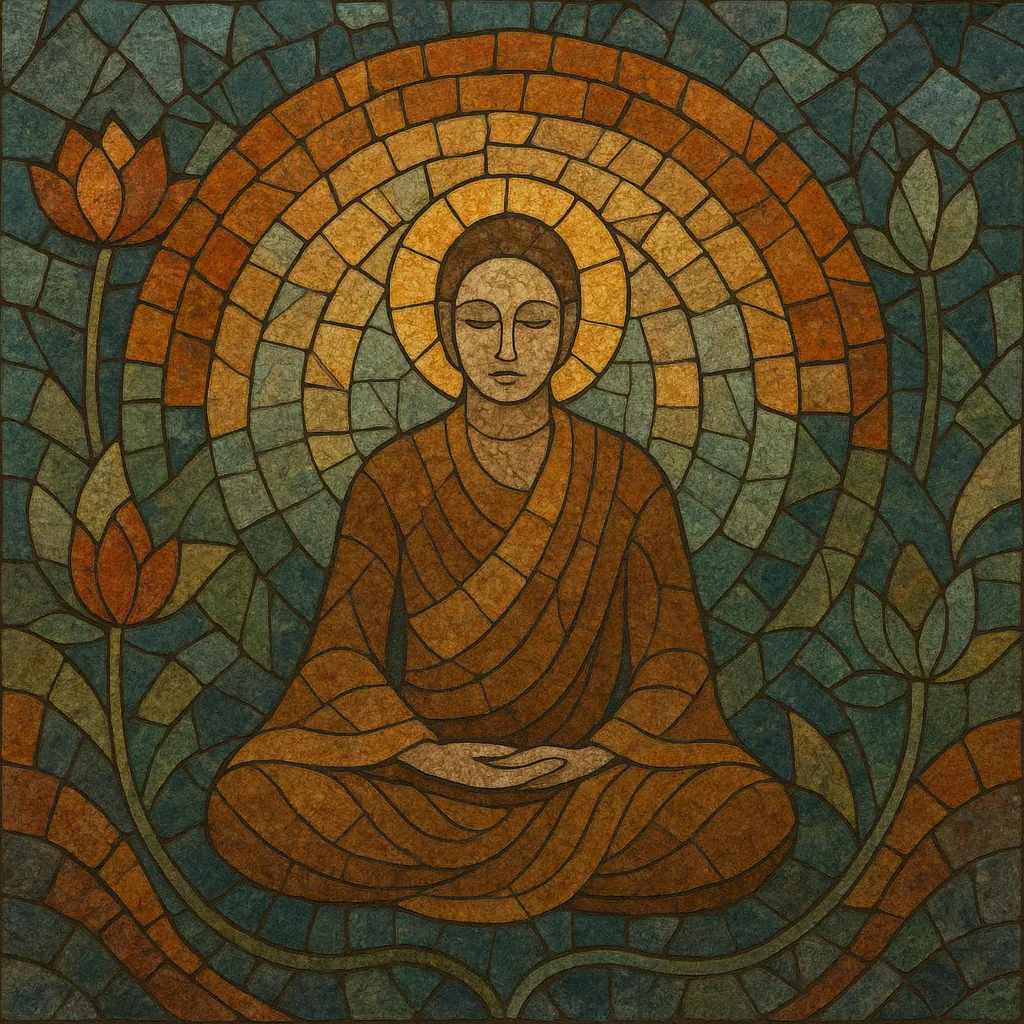Mantra is a devotional chant-based music centered on the repetitive intonation of sacred syllables, words, or phrases—most commonly in Sanskrit, Gurmukhi, Pali, or Tibetan.
While its liturgical roots are ancient, the modern recorded genre crystallized in the late 20th century through the global yoga and meditation movement. Typical performances feature long, cyclical repetitions over drones, gentle percussion, and spacious textures that invite contemplation and collective participation.
Musically, mantra tends to favor modal harmony, steady or subtly evolving rhythms, and incremental dynamic arcs rather than verse–chorus structures. Instrumentation often blends Indian classical timbres (harmonium, tanpura, tabla) with acoustic guitar, hand percussion, and ambient/new-age sound design. The experience is meditative, heart-centered, and communal, distinguishing it from the more lyrical bhajan and the call-and-response song form of kirtan.
The practice of mantra recitation originates in the Vedic traditions of the Indian subcontinent, with metrical and melodic chanting codified in ancient scriptures (c. 1500–500 BCE). Over centuries, Hindu, Buddhist, and later Sikh lineages developed distinct chant practices, each with characteristic texts, meters, and melodic contours. These were transmitted orally by ritual specialists and monastics, primarily for spiritual focus, ritual efficacy, and contemplative cultivation rather than public concert performance.
The 1960s counterculture and the spread of yoga, meditation, and Indian philosophy in the West brought mantra into secular listening spaces. ISKCON’s public chanting, the popularity of Transcendental Meditation, and collaborations between Western musicians and South Asian artists seeded a modern, recorded form. In this period, mantra aesthetics began to incorporate folk guitars, drones, and emerging ambient/new-age production.
From the 1990s onward, dedicated mantra recording artists and ensembles emerged, building a scene around yoga studios, festivals, and wellness communities. Production techniques from ambient, world fusion, and acoustic singer-songwriter styles became common, while maintaining devotional authenticity. Today, mantra sits at the intersection of sacred chant and contemplative popular music, influencing wellness-oriented sound practices and guiding-meditation recordings, and fostering a global participatory culture of group chanting.
Select a traditional text (e.g., Sanskrit bija mantras, Gurmukhi Sikh mantras, Buddhist mantras) and define the energetic aim (devotion, protection, compassion, focus). Keep the lyric concise to support meditative repetition.
Use modal centers (e.g., drones on Sa/Do) and pentatonic or raga-informed pitch collections. Favor sustained drones (tanpura, shruti box, synth pad) and static or slowly evolving harmony to preserve trance-like focus.
Set a comfortable, steady pulse (often 60–90 BPM) or employ relaxed cycles (e.g., tintal-like feels without strict classical complexity). Hand percussion (tabla, frame drum, cajón, gentle shakers) should support breath and mantra cadence rather than drive aggressive grooves.
Blend Indian classical colors (harmonium, tanpura, tabla) with acoustic guitar, piano, handpan, strings, and subtle ambient textures. Keep the arrangement spacious; use reverb/delays to create a contemplative field.
Sing gently, with clear enunciation and sustained phrases. You can use unison chant, call-and-response, or layered choral pads. Structure the piece as a gradual arc: introduce the drone, state the mantra simply, build layers/dynamics, then resolve to stillness.
Prioritize warm, intimate vocal capture and soft transients. Employ gradual crescendos, evolving pads, and breath-aware phrasing. In live settings, encourage communal participation, maintaining a tempo and key that are comfortable for group voices.
Credit sources and teachers, honor pronunciation and lineage context, and present translations where appropriate to preserve meaning and integrity.


